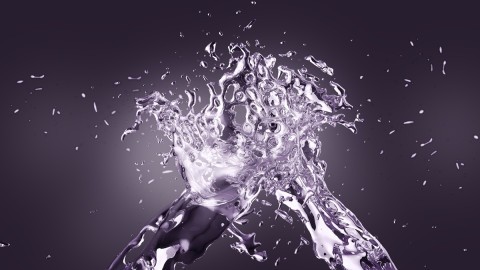For decades, the idea of female ejaculation has been surrounded by mystery, curiosity, and controversy. Some people believe it’s a myth, others claim it’s an overlooked part of female pleasure, and science is still catching up to what women have known for years that squirting is real, natural, and completely human.
In this guide, we’ll explore what female ejaculation actually is, how it happens, what the G-spot has to do with it, and why it’s not something to be embarrassed about or obsessed with. Whether you’ve experienced it, are curious about it, or simply want to understand it better, this is the honest, evidence-based, human perspective you’ve been looking for.
What Is Female Ejaculation?
Let’s start with the basics: what is female ejaculation? Female ejaculation refers to the expulsion of fluid from the urethra during sexual arousal or orgasm. The amount can vary from a few drops to a noticeable gush, depending on the person and the situation. This fluid isn’t urine it’s a combination of natural secretions produced by the Skene’s glands, which are located near the urethra and are sometimes referred to as the “female prostate.”
In medical terms, these glands secrete a thin, milky or clear fluid that may contain trace elements similar to those found in male prostate fluid. It’s part of the body’s natural sexual response and is perfectly healthy.
Is Squirting Real?
The question “is squirting real?” has been debated for decades both in bedrooms and scientific journals. The short answer is yes, squirting is real. The long answer: it’s often misunderstood because not everyone experiences it the same way, and pop culture has distorted the reality.
Scientific studies using MRI and ultrasound imaging have shown that, during arousal, fluid accumulates in the bladder area and is released through the urethra when stimulation reaches a certain intensity. However, it’s not identical to urination the fluid composition and mechanism are different.
In simpler terms: yes, squirting happens, and yes, it’s a genuine physiological response. But it’s also a deeply personal one not every woman will experience it, and that’s completely normal.
Understanding the G-Spot and Its Role
To talk about female ejaculation, we have to talk about the G-spot or more accurately, the G-zone. It’s a network of sensitive tissue located on the front vaginal wall, a few centimeters inside the body. When stimulated, these tissues swell with blood and become extremely sensitive, creating the potential for intense pleasure and, in some cases, G-spot orgasms or ejaculation.
Contrary to popular belief, the G-spot isn’t a single button or switch to “activate.” It’s more like a system of nerves, glands, and muscle fibers that respond to rhythmic pressure and emotional relaxation. When the stimulation is consistent and the person feels mentally and physically safe, the tissues can release the fluid that builds up this is what’s often seen as squirting.
Female Pleasure Is More Than Orgasm
The conversation about how to make a woman squirt often misses the most important point: pleasure is not a goal; it’s an experience. The body can’t release deeply physically or emotionally when it feels pressured or observed. Female pleasure is holistic; it involves the body, mind, and trust between partners.
True arousal happens when there’s comfort, communication, and the absence of judgment. When the body feels safe, the nervous system allows deeper relaxation and a more intense physical response. This is why some people only experience squirting after years of exploring their bodies, often in trusting relationships or solo discovery.
So, the key isn’t a “technique” or a specific movement. It’s about presence, patience, and connection.
How Does Squirting Actually Happen?
Although every person’s body is different, many share similar physiological steps when female ejaculation occurs:
-
Arousal builds up gradually.
Blood flow increases in the pelvic region, especially around the G-spot and Skene’s glands. -
Tissues swell and become sensitive.
With continued stimulation, the glands fill with fluid. -
The urge to release appears.
This often feels similar to the need to urinate, which can confuse or embarrass some people. Relaxation is key here. -
The pelvic muscles contract.
When the person lets go and stops holding back, those muscles release the accumulated fluid sometimes gently, sometimes powerfully.
It’s important to note that squirting doesn’t always accompany orgasm. It can happen before, during, or even after an orgasm, depending on the person’s body and arousal state.
The Emotional Side of Letting Go
Beyond the biology, there’s an emotional depth to female ejaculation that’s often overlooked. Many women describe it as a feeling of release, vulnerability, or catharsis like letting go of physical and emotional tension all at once. That emotional surrender is just as meaningful as the physical sensation.
It’s common to feel shy, surprised, or even embarrassed the first time it happens. That’s okay. Remember that this response is natural and healthy. No one should feel ashamed of their body’s reactions.
Why Some Women Don’t Squirt And That’s Okay
Not everyone experiences squirting, and that’s perfectly fine. It doesn’t mean you’re “missing out” or “not doing it right.” Just like not everyone has the same kind of orgasm, female ejaculation varies greatly among individuals.
Some may find it easier with certain types of stimulation, others never experience it at all. Hormonal balance, hydration, pelvic muscle tone, emotional comfort, and even simple curiosity all play roles. What matters most is pleasure and connection, not performance or comparison.
How to Make a Woman Squirt The Real Truth
There’s no secret formula, but if you want to explore this together with a partner, communication and comfort are essential. Here are some general, respectful principles:
-
Start slow and focus on trust.
No one can relax enough to release if they feel tense or self-conscious. -
Explore the G-zone gently.
Consistent, rhythmic pressure on the front wall of the vagina can stimulate the glands associated with female ejaculation. -
Encourage relaxation and deep breathing.
This helps release control and enhance sensitivity. -
Don’t chase the result.
The more you try to force squirting, the less likely it is to happen. Let it be a byproduct of connection and arousal, not a goal.
Remember: this isn’t about tricks or techniques. It’s about awareness, curiosity, and mutual respect.
What Science Says About Female Ejaculation
Research over the last decade has shifted from skepticism to understanding. Studies published in journals such as The Journal of Sexual Medicine have confirmed that female ejaculation is a distinct phenomenon, not a myth or accident.
Key scientific takeaways include:
-
Fluid released during squirting contains traces of prostate-specific antigen (PSA), similar to male ejaculation, proving it’s not just urine.
-
The Skene’s glands act as the biological origin of this response.
-
The experience varies by anatomy, arousal, and psychological comfort.
Science now recognizes female ejaculation as a legitimate aspect of sexual health and expression something to understand, not stigmatize.
Embracing Female Pleasure Without Shame
For too long, female sexuality has been discussed in whispers as if pleasure were something to hide or control. But female ejaculation reminds us of the body’s power and complexity. It’s a symbol of what happens when we stop trying to fit pleasure into predictable boxes.
Pleasure, especially female pleasure, is about more than orgasm. It’s about freedom, trust, and the courage to explore without guilt. When we normalize conversations about squirting, G-spot orgasms, and other forms of arousal, we open the door to a healthier, more honest understanding of sexuality.
The Art of Letting Go
So, is squirting real? Absolutely. What is female ejaculation? It’s the body’s natural way of expressing deep pleasure and release. And how to make a woman squirt? by not “making” her at all, but by creating the space where she feels free enough to let it happen.
At its heart, female ejaculation isn’t a performance; it’s a reminder of how beautifully complex and responsive the human body is. When we replace shame with curiosity and judgment with respect, pleasure becomes what it was always meant to be something deeply human, real, and worth celebrating.













